
Roots
Consider for a moment the very strands upon your head, not as mere fibers, but as living lineages, each coil and curve a testament to a journey stretching back through time, across continents, and into the heart of ancestral knowledge. This hair, particularly that which holds curl and wave in its very structure, carries echoes of ancient landscapes, sun-drenched savannas, and the ingenuity of those who came before us. It is here, in this deep connection to our past, that the enduring presence of natural oils for textured hair finds its grounding.
These oils, drawn from the bounty of the earth, were never accidental choices. They were born of keen observation, passed down through generations, their efficacy honed by centuries of lived experience. Early communities, living in diverse climates from arid deserts to humid rainforests, developed profound understandings of their environment’s offerings.
They discerned which plants provided nourishment, which offered protection, and which held properties beneficial to the hair and scalp. This deep engagement with the natural world, rather than any complex scientific instrument, was the initial laboratory.
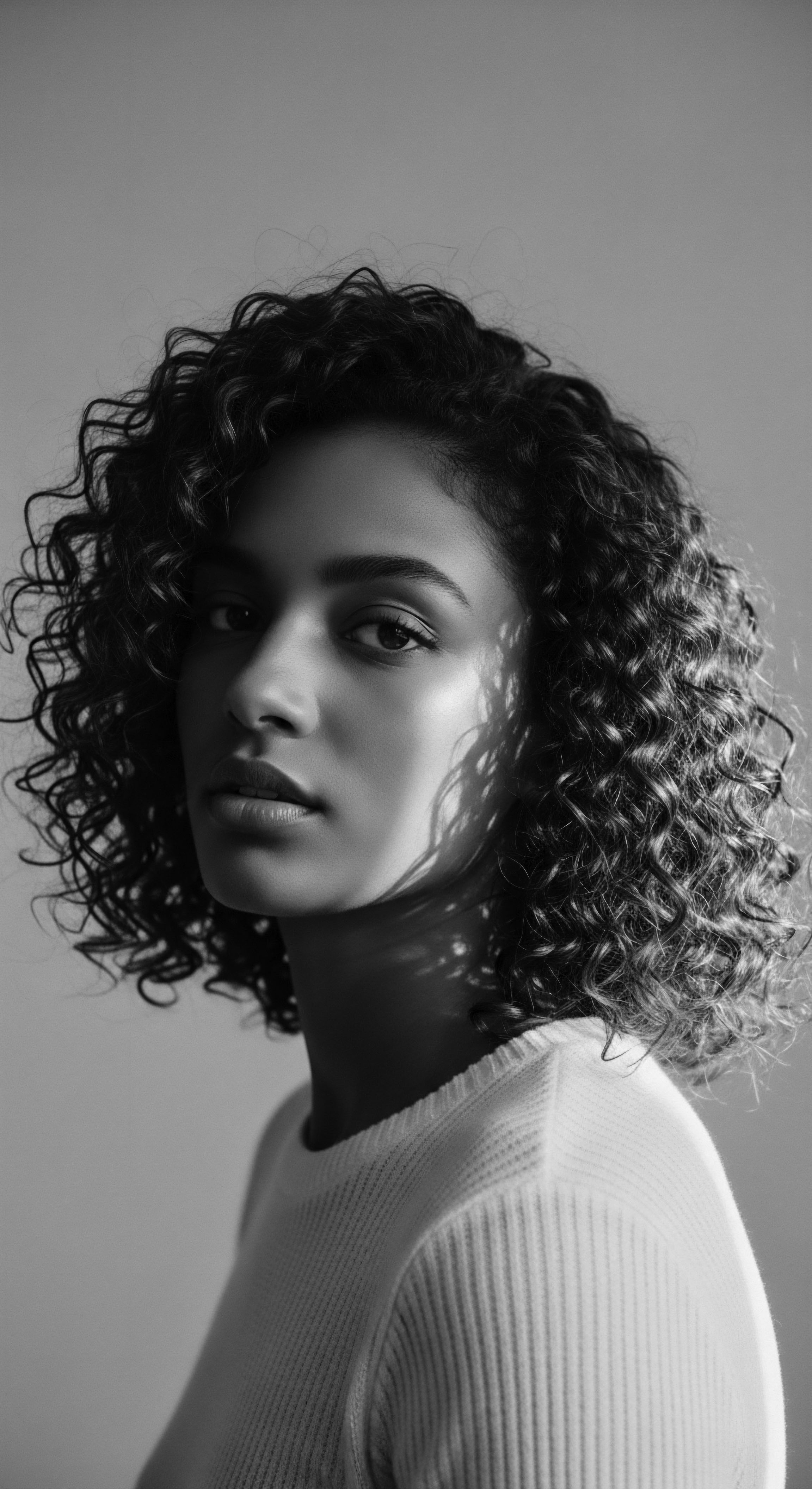
The Helix of Time
The unique helicoidal structure of textured hair, with its elliptical cross-section and propensity for coiling, presents specific needs. Its curves create natural points for moisture escape, making it susceptible to dryness. This inherent characteristic was, paradoxically, a design for survival in ancestral homelands, offering protection against intense solar radiation and regulating scalp temperature.
Yet, this very architecture necessitated consistent external moisture and conditioning. Herein lies the ancestral wisdom that sought out natural emollients.
Across various African societies, the understanding of hair transcended mere aesthetics. It was often viewed as a spiritual antenna, a conduit for divine communication, or a symbol of identity, status, and tribal affiliation. Therefore, its care was a sacred act, a ritualistic practice deeply entwined with spiritual beliefs and social structures. The substances used for hair anointing — from rich butters to potent seed oils — were selected not only for their tangible benefits but also for their perceived spiritual resonance and connection to the earth’s generative force.
The wisdom of ancestral communities, deeply attuned to the natural world, guided the selection of oils that directly addressed the inherent needs of textured hair.
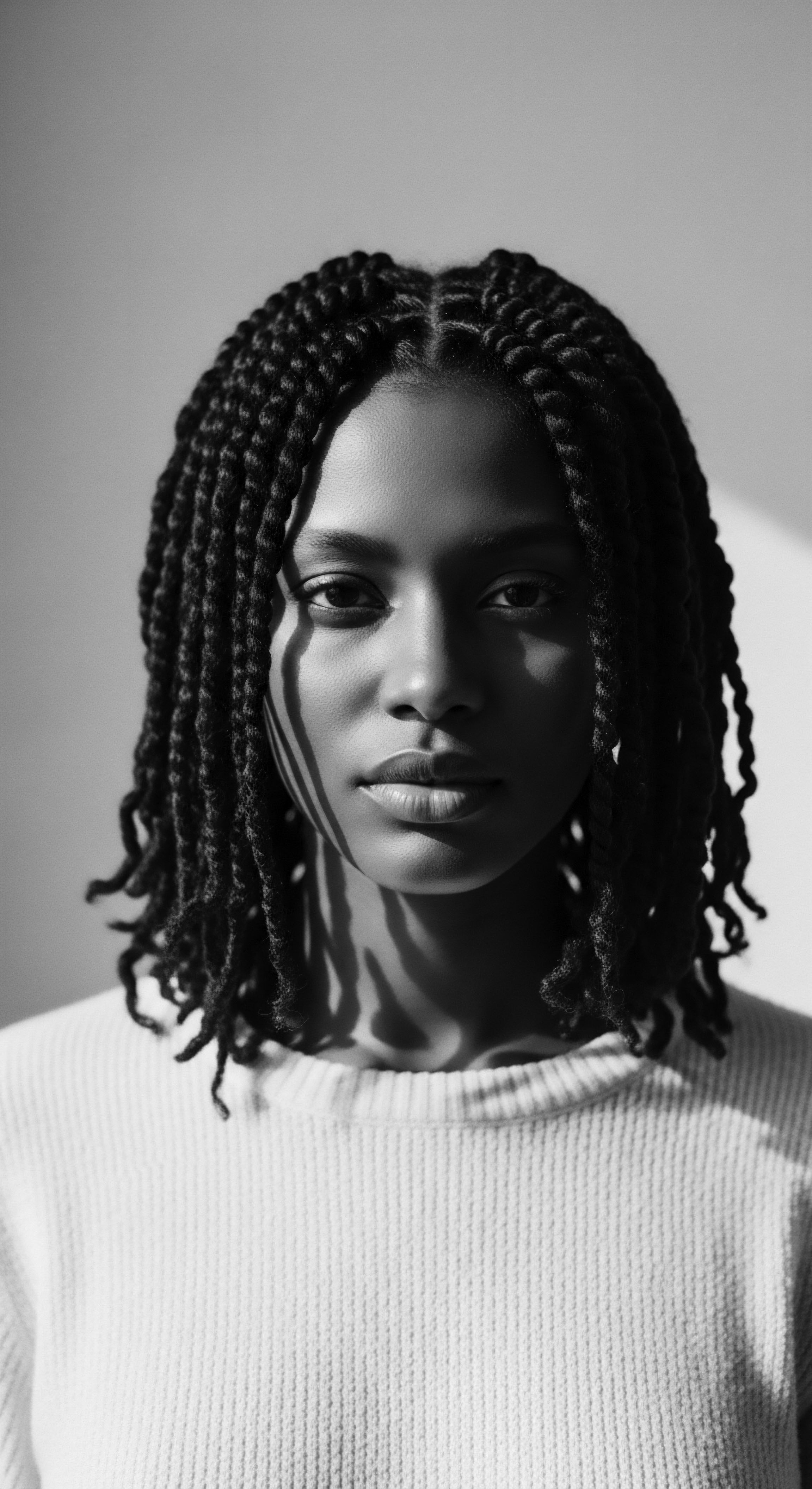
Echoes from the Source
The practice of oiling hair stretches into antiquity, a testament to its fundamental role in hair care across numerous civilizations. Consider the traditions of Ancient Kemet, where the use of various oils for cosmetic and medicinal purposes was documented extensively. Egyptian texts, etched into papyri and tomb walls, depict individuals with meticulously styled and cared-for hair, often adorned with cones of aromatic fats or oils. Analyses of ancient balms and unguents reveal ingredients such as Castor Oil, Moringa Oil, and Almond Oil, valued for their conditioning and protective properties.
These were not simply applied; they were massaged into the scalp, worked through the strands, and often combined with other botanicals to create potent hair formulations. (Robins, 1993)
Beyond the Nile, in regions of West Africa, communities relied on the generous gift of the Shea Tree. Shea butter, extracted from the nuts of Vitellaria paradoxa, has been a staple for millennia. Its high concentration of fatty acids and vitamins made it an indispensable ingredient for moisturizing hair, sealing in hydration, and protecting against harsh environmental conditions.
The process of shea butter production, often a communal endeavor, links directly to the heritage of shared labor and knowledge transfer among women. Similarly, in North Africa, the Argan Tree yielded a liquid gold – argan oil – prized for its ability to soften hair and impart a lustrous sheen.
The selection of these natural oils was a deeply intuitive process, guided by a sophisticated understanding of plant properties passed down through oral traditions. The very act of extracting these oils – pounding nuts, pressing seeds, simmering fruits – was itself a practice that connected people intimately with their environment, reinforcing a cycle of reverence and reciprocity.
| Traditional Oil Source Shea Butter (West Africa) |
| Ancestral Use for Hair Scalp conditioning, moisture seal, sun protection, pre-styling softener |
| Modern Parallel or Scientific Link Rich in fatty acids (oleic, stearic), vitamins A and E; forms protective barrier. |
| Traditional Oil Source Moringa Oil (Ancient Kemet, East Africa) |
| Ancestral Use for Hair Hair shaft conditioning, strengthening, shine, scalp health |
| Modern Parallel or Scientific Link Abundant in antioxidants, oleic acid; offers cuticle smoothing and nourishment. |
| Traditional Oil Source Coconut Oil (Tropical regions) |
| Ancestral Use for Hair Deep conditioning, protein retention, anti-microbial scalp care |
| Modern Parallel or Scientific Link Lauric acid content allows penetration into hair shaft; reduces protein loss. |
| Traditional Oil Source These oils, gifts from the earth, represent a continuous thread of wisdom connecting ancient care practices to current hair wellness. |
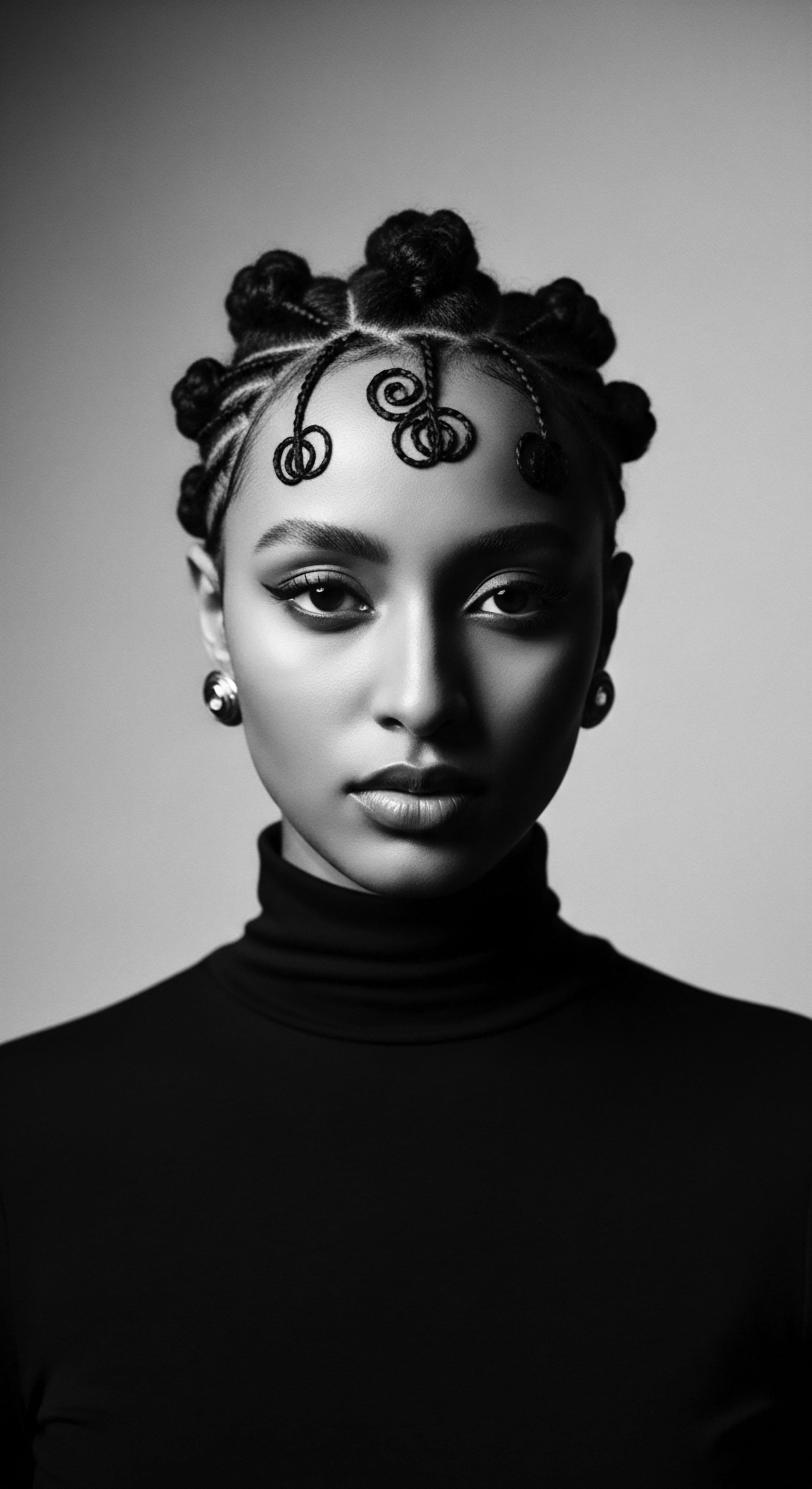
Ritual
The application of natural oils was never a solitary act, confined to a mere cosmetic routine. Instead, it was often deeply embedded within the social fabric of communities, a communal ceremony that reaffirmed bonds, shared knowledge, and celebrated identity. This was the essence of the hair ritual ❉ a tender thread connecting individuals to their lineage and their people, a practice that transcended individual care to become a cornerstone of collective heritage. The rhythms of life, from rites of passage to daily preparations, often involved the careful anointing of hair, a testament to its cultural significance.

Adornment and Protection in Ancestral Ways
Within the ancestral traditions, natural oils played a critical role in both the artistry and the practicality of textured hair styling. Styles were not simply decorative; they served as protective measures, shielding delicate strands from environmental aggressors such as sun, wind, and dust. Braids, twists, and cornrows, iconic forms of African hair art, were often created on well-prepared, oiled hair.
The oil provided lubrication, reducing friction during the styling process, which could otherwise cause breakage on fragile, dry strands. This preparation lengthened the lifespan of protective styles and contributed to overall hair health.
The Fulani people of West Africa, for instance, are renowned for their intricate braiding patterns that often include distinctive loops framing the face. These styles, often adorned with cowrie shells and amber beads, were meticulously maintained. The application of Shea Butter or other local oils was customary before and during the braiding process, ensuring the hair remained pliable, soft, and lustrous.
This practice speaks to a profound understanding of hair mechanics, long before modern trichology offered its explanations. The oil sealed the cuticle, providing a barrier against moisture loss and environmental damage, allowing these elaborate, protective styles to serve their function for extended periods.
Hair rituals, infused with the careful use of natural oils, strengthened communal bonds and reinforced cultural identity across generations.

The Himba’s Luminous Ochre
One powerful historical example that truly crystallizes the ancestral practices underpinning the modern use of natural oils is the enduring tradition of the Himba Women of Namibia. Their iconic reddish hue is the direct outcome of a practice centuries old ❉ the application of Otjize. This unique mixture is a paste composed of Ochre Powder (a mineral pigment), carefully blended with Butterfat, and sometimes enhanced with aromatic resins or herbs.
The Himba women meticulously apply this mixture to their skin and, significantly, to their intricately styled hair, which is often fashioned into thick dreadlocks. (Frank, 2000)
The purpose of otjize goes far beyond mere aesthetics. From an ancestral perspective, it serves multiple practical functions:
- Sun Protection ❉ The ochre acts as a natural sunscreen, shielding the skin and scalp from the intense African sun.
- Insect Repellent ❉ Certain aromatic additions to the otjize can deter insects.
- Hygiene and Moisture ❉ The butterfat provides deep conditioning and moisture to both skin and hair in an arid environment, while also acting as a cleansing agent.
- Symbolic Significance ❉ The reddish color symbolizes earth and the richness of the land, connecting the Himba women to their heritage and their environment. It is a powerful marker of their cultural identity, social status, and spiritual connection.
This Himba practice is a profound illustration of how ancestral use of natural fats (butterfat) was intricately linked to practical survival, spiritual meaning, and cultural expression. The butterfat, a natural oil, serves the same fundamental purpose that modern natural oils do for textured hair ❉ to condition, protect, and maintain its integrity in challenging environments. The Himba’s otjize tradition is a living archive, demonstrating a holistic approach to hair care that is deeply rooted in available natural resources and cultural values. It shows us that the desire to protect, nourish, and adorn textured hair with nature’s offerings is not new; it is a profound echo from our collective past.
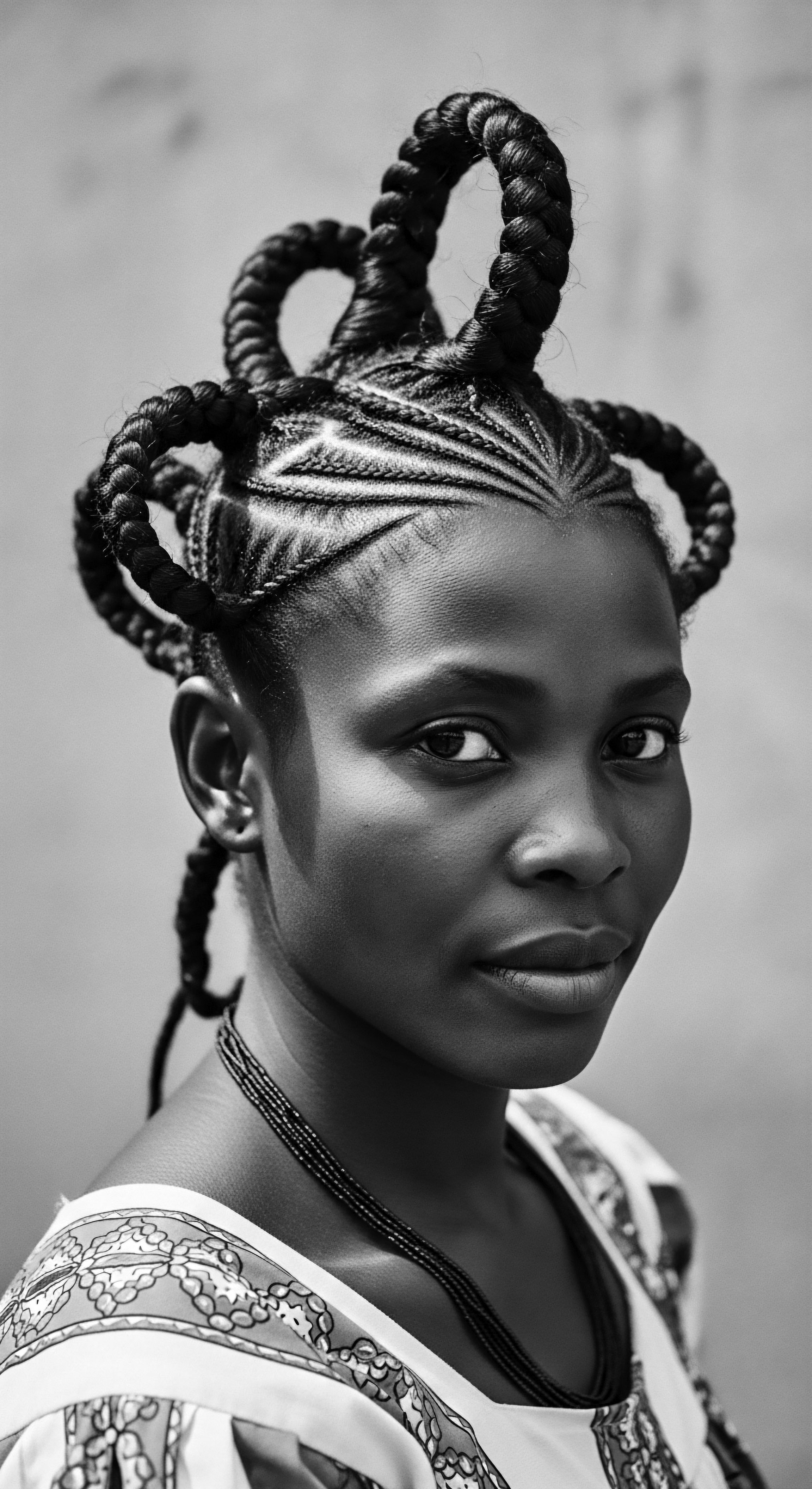
From Palm to Plait
In other West African traditions, the Palm Oil tree, Elaeis guineensis, offered another vital resource. Red palm oil, rich in carotenoids and tocopherols (forms of Vitamin E), was traditionally used to condition hair, add a vibrant sheen, and possibly aid in scalp health. The deep orange-red color could also be used to tint hair, adding another layer to the aesthetic practices.
This oil, like shea butter, was integral to the preparation for various styling techniques, ensuring that hair was pliable and less prone to breakage during the intricate processes of braiding and twisting. These were not just cosmetic choices; they were deeply practical, drawing upon the inherent qualities of nature’s offerings to sustain hair health and beauty.
| Traditional Styling Need Detangling and Softening |
| Role of Natural Oils Oils provided slip, allowing fingers or combs to move through coils with less resistance. |
| Traditional Styling Need Moisture Retention |
| Role of Natural Oils Applied before braiding or twisting, oils sealed in water, keeping hair hydrated within protective styles. |
| Traditional Styling Need Cuticle Smoothing |
| Role of Natural Oils The lipid content helped to lay down the hair's outer layer, reducing frizz and adding shine. |
| Traditional Styling Need Scalp Protection |
| Role of Natural Oils Massaged into the scalp, oils soothed dryness and created a barrier against environmental stressors. |
| Traditional Styling Need Ancestral oils were central to preparing textured hair for protective styling, ensuring both durability and beauty. |

Relay
The wisdom of ancestral practices concerning natural oils for textured hair is not a static relic of the past; it is a living legacy, continually adapting and informing contemporary approaches to hair care. This continuity represents a relay race of knowledge, where insights passed down through generations are met by modern understanding, creating a holistic framework for hair wellness. It speaks to the resilience of traditions and the enduring validity of practices forged in deep connection with the earth.

The Holistic Whispers
Ancestral hair care was seldom a standalone activity. It was interwoven with broader concepts of holistic wellbeing, diet, spiritual harmony, and communal health. The understanding was clear ❉ what one consumes, the environment one inhabits, and the spiritual state one maintains, all influence the vitality of hair.
Natural oils, therefore, were often viewed as part of a larger ecosystem of care, complementing a diet rich in indigenous foods and a lifestyle aligned with natural rhythms. This comprehensive view contrasts with a fragmented modern approach that sometimes isolates hair care from overall health.
Consider the role of oils in pre-shampoo treatments, a practice that mirrors ancient anointing rituals. Before the advent of synthetic shampoos, individuals would often use natural clays or plant extracts to cleanse the hair and scalp. Prior to this, rich oils might be applied to loosen dirt, condition the hair, and provide a protective layer, reducing the stripping effect of harsh cleansers. This practice, often called ‘pre-poo’ today, directly echoes ancestral methods of preparing hair for washing, ensuring softness and minimizing friction.

The Nighttime Sanctuary
The importance of protecting textured hair during sleep is a concept deeply rooted in ancestral practices, even if the tools have evolved. While modern bonnets and silk pillowcases are contemporary adaptations, the underlying principle of safeguarding hair from friction and moisture loss overnight is an ancient one. Across various African cultures, head coverings held immense significance—not only for protection from the elements during the day but also for preserving intricate hairstyles and maintaining hair health during rest.
Often, these coverings were made from natural fibers, sometimes treated with specific oils to further benefit the hair. The consistent use of natural oils before covering the hair at night created a sealed environment, allowing the oils to penetrate and condition the strands, preventing dryness and breakage that could occur from movement against abrasive surfaces. This intentional, restorative care during repose is a direct continuation of ancestral wisdom, recognizing that hair health is a continuous commitment, not just a daytime pursuit.
The legacy of ancestral hair care traditions persists today, offering a comprehensive approach that prioritizes natural ingredients and holistic wellbeing for textured strands.

From Ancient Extracts to Modern Formulations
The properties of natural oils, once understood through generations of observation, are now often validated by contemporary scientific inquiry. Modern studies on oils like Coconut Oil, Jojoba Oil, and Avocado Oil confirm their ability to reduce protein loss, penetrate the hair shaft, and seal the cuticle, mirroring the ancestral benefits observed for centuries.
- Jojoba Oil, with its chemical structure closely resembling sebum (the scalp’s natural oil), was historically used by indigenous peoples of the Sonoran Desert for hair and skin conditioning. Its ability to balance scalp oils and provide conditioning is now scientifically recognized.
- Coconut Oil, a staple in many tropical ancestral diets and beauty rituals, is notable for its high lauric acid content, which allows it to penetrate the hair shaft more effectively than many other oils, reducing protein loss during washing. (Rele & Mohile, 2003)
- Avocado Oil, from the fruit native to Mesoamerica, was historically used for its nourishing properties. Its richness in monounsaturated fats, vitamins A, D, and E, and amino acids makes it a powerful conditioner for textured hair, providing deep moisture and helping to strengthen strands.
The “problem-solving compendium” of ancestral practices was largely empirical, but no less effective. Dryness was addressed with regular oiling and moisturizing with butters. Scalp irritation might be soothed with infusions of specific herbs steeped in oil.
Breakage was often mitigated by gentle detangling techniques using oils and maintaining hair in protective styles for extended periods, reducing manipulation. These solutions, passed down orally and through demonstration, form the very bedrock of many current textured hair care regimens.
The journey of natural oils for textured hair, from the ancient communal rituals to today’s personalized regimens, is a testament to the enduring power of heritage. It is a story told not just through academic texts, but through the vibrant life of each strand, carrying forward the wisdom of those who understood hair not simply as an adornment, but as a deep connection to self, community, and the living earth.
| Hair Care Need Sealing Moisture |
| Modern Application of Natural Oils Layering oil over water-based products (L.O.C. Method). |
| Ancestral Parallel Consistent application of butters and oils to wet or damp hair after bathing. |
| Hair Care Need Scalp Massage |
| Modern Application of Natural Oils Using light oils to stimulate scalp blood flow and address dryness. |
| Ancestral Parallel Traditional scalp anointing ceremonies and daily massage with oils to promote growth and health. |
| Hair Care Need Pre-Shampoo Treatment |
| Modern Application of Natural Oils Applying oil to hair before washing to protect from stripping. |
| Ancestral Parallel Using fats or oils as a pre-cleansing step with natural cleansers. |
| Hair Care Need Modern textured hair care draws directly from a rich ancestral legacy, adapting ancient practices for contemporary vitality. |
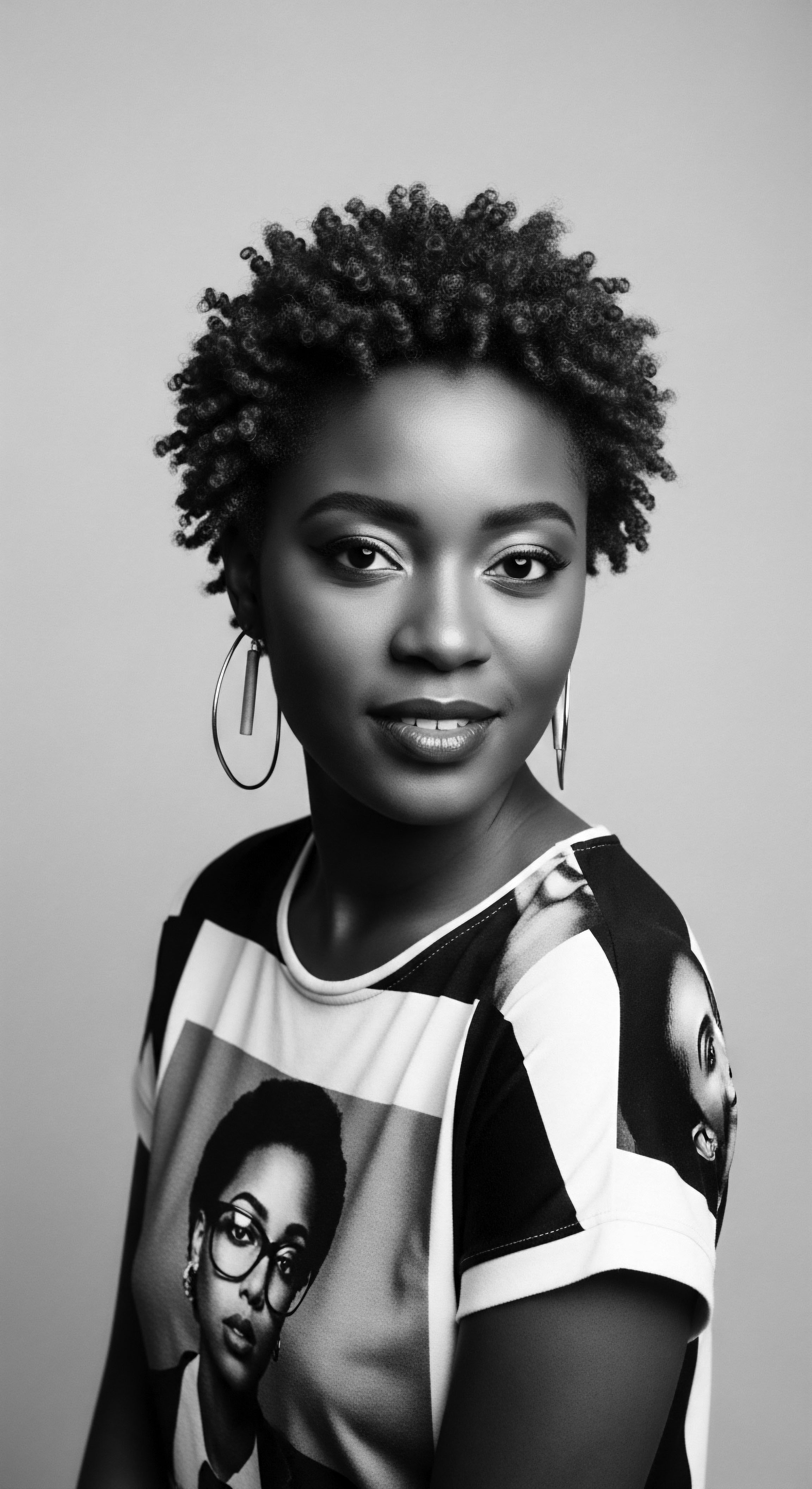
Reflection
The journey through the ancestral practices that underpin the modern use of natural oils for textured hair reveals a profound truth ❉ our hair carries memory. Each coil and curl holds the wisdom of generations who learned to live in harmony with their environment, discerning the earth’s bounty to nourish, protect, and adorn. The oils we reach for today, whether shea, coconut, or jojoba, are not simply commercial products; they are conduits to a rich, living heritage, echoes of a time when hair care was intertwined with identity, community, and spiritual reverence.
This understanding invites us to view our textured strands not as a challenge, but as a sacred inheritance, a testament to resilience and ingenuity. The choices we make in our daily hair rituals thus become acts of remembrance, honoring the ancestral hands that first pressed the seeds, warmed the butters, and passed down the whispers of care. It is a continuous conversation across centuries, a vibrant dialogue where the past informs the present, shaping a future where textured hair remains a radiant expression of enduring legacy. The soul of each strand, indeed, vibrates with these profound ancestral rhythms.
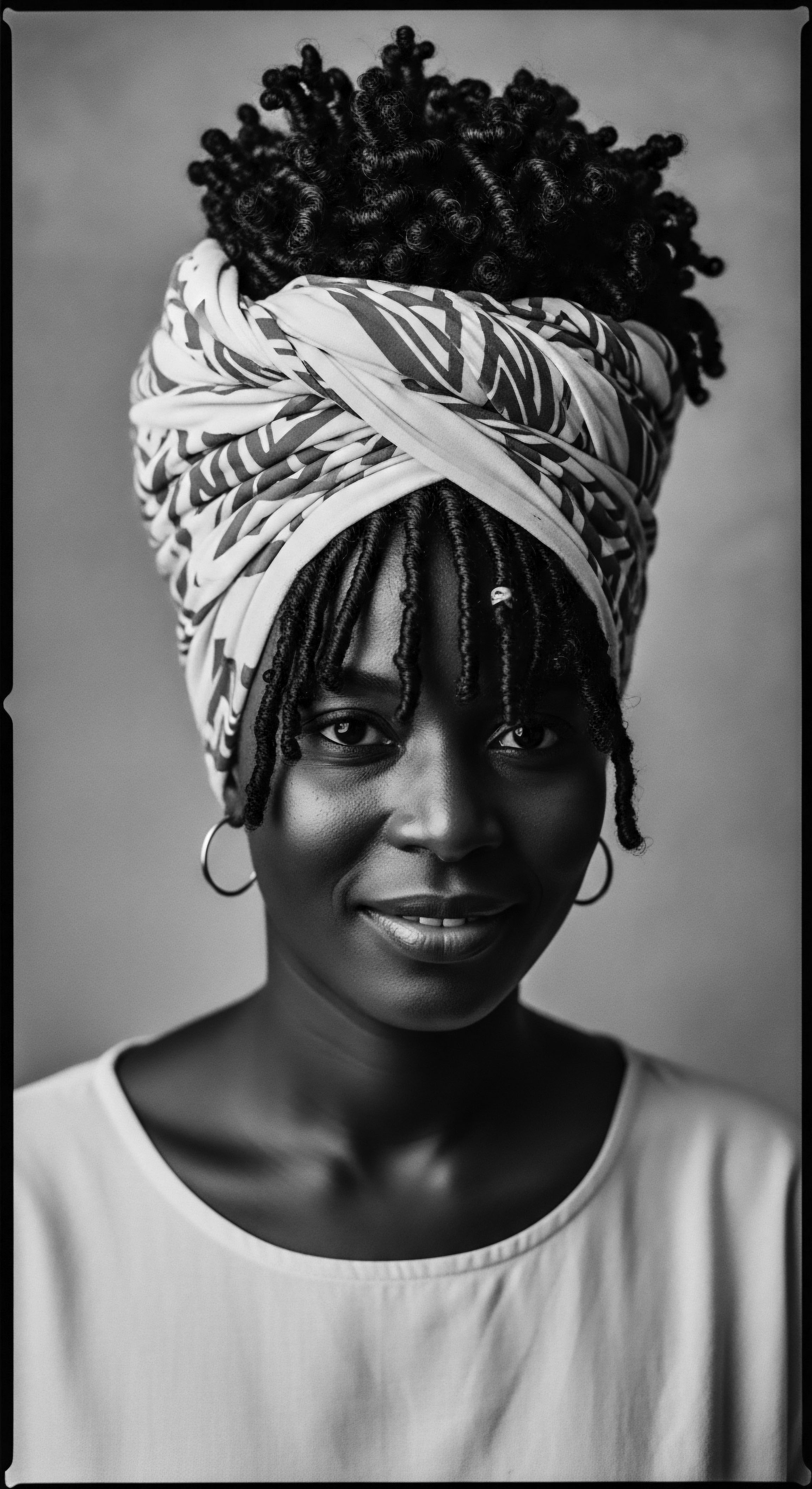
References
- Frank, Barbara. (2000). “Himba Women ❉ Dressing Beauty.” In African Textiles Today. Smithsonian National Museum of African Art.
- Rele, Jayashree V. & Mohile, R.B. (2003). “Effect of mineral oil, sunflower oil, and coconut oil on prevention of hair damage.” Journal of Cosmetic Science, 54(2), 175-192.
- Robins, Gay. (1993). Women in Ancient Egypt. Harvard University Press.
- Shepard, Bonnie M. (2001). The Hair Book ❉ A History of Black Hair. Milady.
- Thompson, Anthony K. (2008). African Hair ❉ Its Cultural Significance. Black Classic Press.
- Walker, A’Lelia Bundles. (2001). On Her Own Ground ❉ The Life and Times of Madam C.J. Walker. Lisa Drew Books.
- Wilkerson, Margy J. (1992). The African-American Almanac ❉ Hair. Gale Research.
